At 8.30am the Daintree River is still. Our boat is the only disturbance as we look for crocodiles supposedly lurking among the mangrove, wild hibiscus, river gums and wild taro plants along the water’s edge. We don’t even make enough noise to bother a kingfisher sunning itself on a branch.
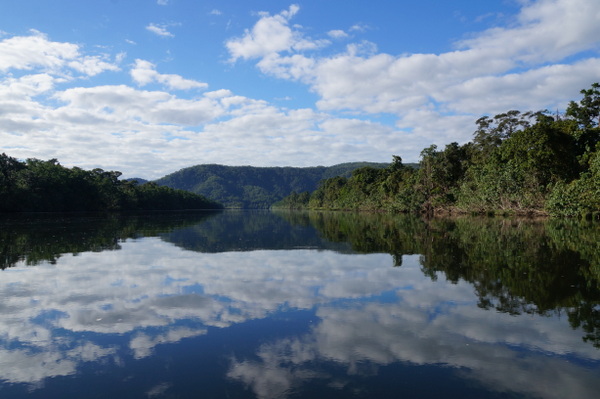
In surroundings so peaceful it’s hard to imagine the destruction that hit this area when Cyclone Ita swung by in April, but the signs are there: debris hangs high in the trees along the river and a landslide downstream reveals a steep patch of soil among the otherwise dense vegetation. When we board our Crocodile Express boat for a tour down the river, Steve, our guide, brings out a photo of the area right behind us – the Riverview Van Park. In April the river flooded to 11m nearly covering the street lamp on the boat ramp. Our caravan, sitting safely on a hill at the Riverview Van Park in July, would have been underwater 11 weeks earlier.
Such weather might be unpredictable, but it’s not unexpected. Not here. Steve says the area floods to the tune of four to six metres about nine times a year.
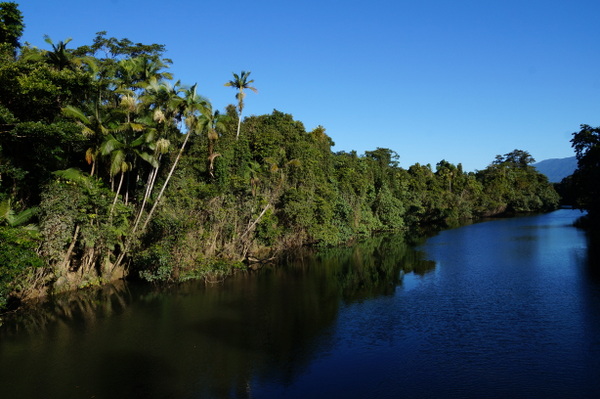
The volatility of this region adds to its appeal – at least for me. The tourist brochures sell the Daintree National Park as a picturesque and tranquil destination and you could certainly have that experience by staying in the bungalows and spa lodges hidden among the trees and spending your days on “safari”. But there’s another side to this part of the world.
Our time in the Daintree starts at the village itself, which isn’t part of the National Park. On the way in we pass paddocks of cane sugar, which is being harvested late because of the rains, and handwritten signs advertising paw paws and dragon fruit for sale at roadside stalls. In the afternoon we walk along a gravel road, following the river upstream. We pass cattle, horses, coconuts, hibiscus trees and signs warning of crocodiles in the water. It’s a weird mix of tropical-meets-country.
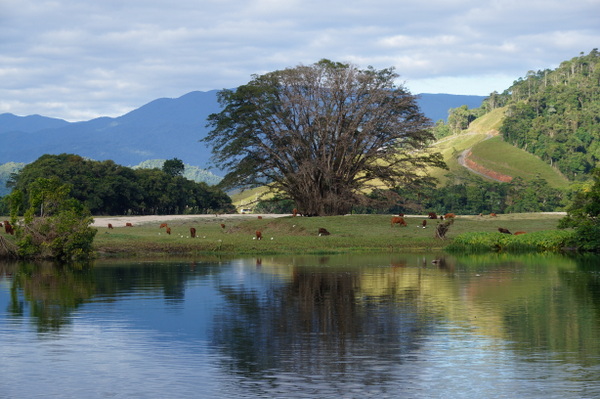
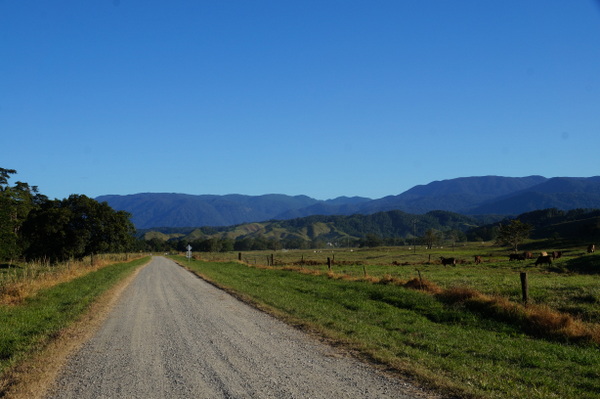
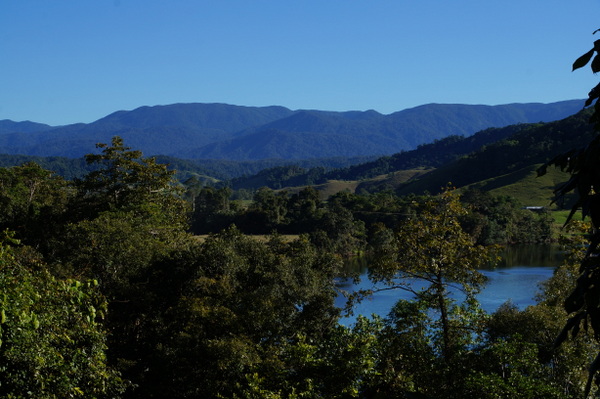

Daintree was settled in the late 1860s and supported a much larger population than the 80 or so people who live here now. Dairy farms supplied the butter factory, which is now a tour booking office, and the surrounding hills were logged for cedar.
Now tourism is the money maker.
The village is not much more than the caravan park, grocery store and lots of information for tourists. We visit the pub and receive our drinks in stubby holders bearing the names Anne, Brett, Aaron, Joanne and Allison. The waitress points a few metres down the hill to where the water reached in April. It came close.
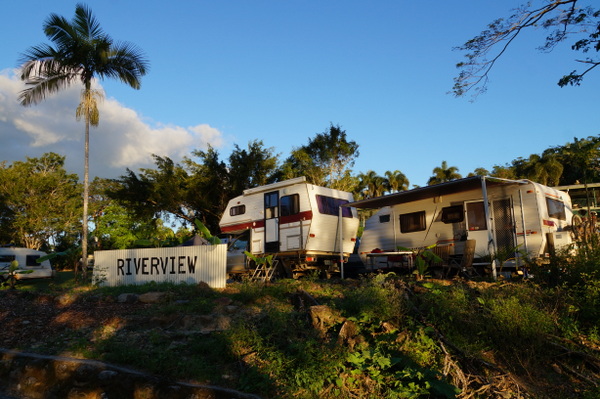
The Category Five Cyclone Ita was the worst to hit the area in three years, which isn’t actually that long ago. It affected Papua New Guinea, the Solomon Islands, Australia and New Zealand and recorded gusts of up to 300kmh. The Daintree was one of several rivers in North Queensland to experience major flooding.
Everything was cleaned up in time for the tourists to arrive. Although some brave the wet season, most prefer to visit before the rains hit. In the first week of July, also school holidays, the van park is busy, as is the Crocodile Express boat that cruises up and down the river.
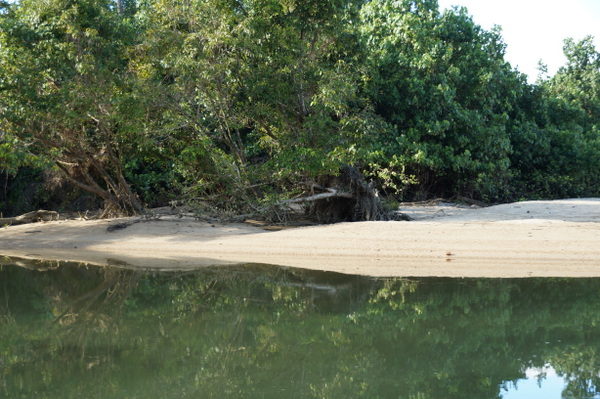
In the morning we jump on, hoping to spot a crocodile up close, or even better, at a safe distance. Although the water is about 18C, it’s perhaps a little cold for the crocs this early in the day. But the crocs aren’t the only attraction here. With Steve as chief spotter we spy on several birds. Some cattle graze daringly close to the water’s edge. Steve says about 20 fall victim to crocs each year. We spend most of the hour scanning tree branches for snakes, but it’s Steve who somehow finds one hidden among the leaves.
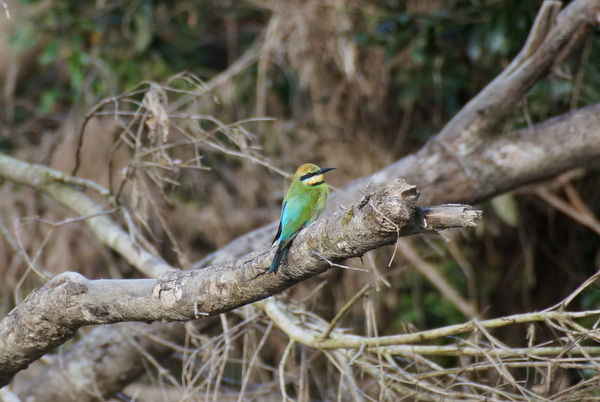
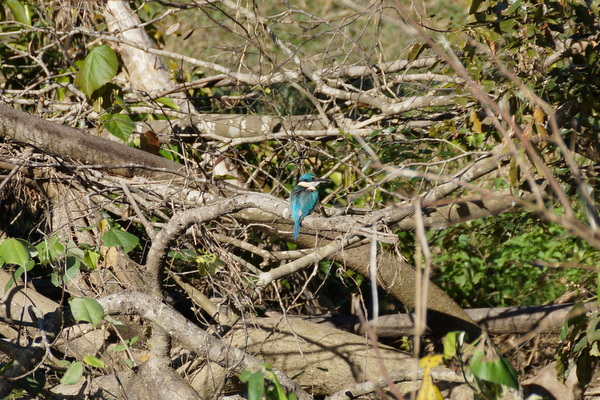
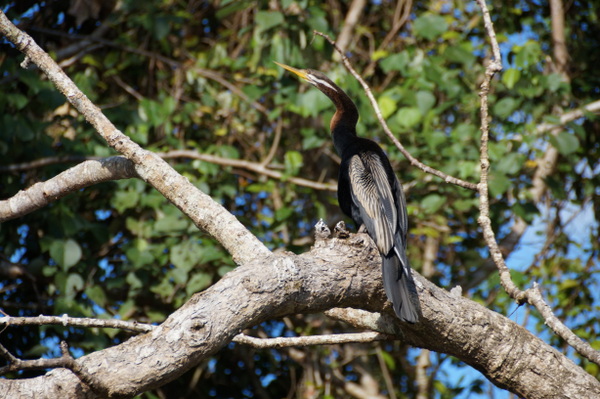
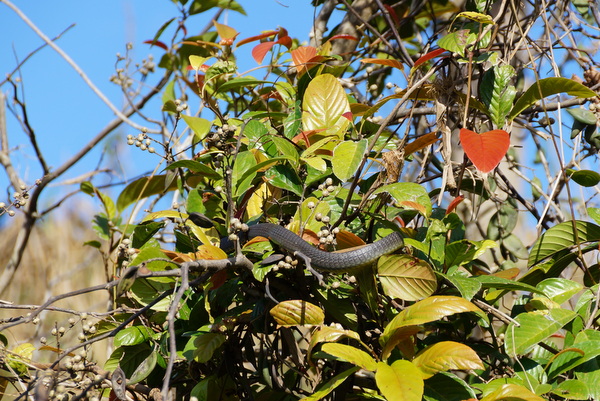
About 11km from Daintree village is the ferry crossing. It’s not long after driving off the ferry that we enter the Daintree National Park and see those landscapes that end up on postcards. Signs warn us to be on the watch for cassowaries, but we don’t spot one.

At the Walu Wugirriga Mount Alexandra Lookout we see the river flow into the Coral Sea and stare over the a patch of the Daintree Rainforest, which covers about 12,000 square kilometers and is part of the Wet Tropics World Heritage Area. The rainforest is home to an astonishing diversity of flora and fauna. Even if you can’t identify them, the beauty of the area is easy to appreciate. While many plants and animals evolved in other parts of the country, conditions in the Daintree allowed them to flourish, and there are now many species found here that you can’t see anywhere else.
The ecosystem of the Daintree Rainforest sets it apart from almost every other place in Australia, yet it’s a place few people will ever see.
Look at a map of Queensland and you’ll spot Daintree National Park barely half the way up the east coast. But look where it is compared to the Gold Coast, Brisbane and Surfers Paradise and you’ll realise it’s still a long way from everything else. It took me a 2-hour flight and a 2-hour drive for me to get here from the capital. We are here in peak season, which is low season in almost every other part of the country. Temperatures in summer average 37C and the humidity makes it considerably unpleasant. Two weeks ago it rained non-stop for days. Now we have nothing but sunshine and an average of 26C. There is no public transport and very limited mobile phone reception.
There are also crocodiles, snakes and probably countless other creatures that could kill you. In short, the Daintree is hard to reach, temperamental and dangerous.
But if you can get here and keep your limbs away from the crocs, you’ll have a pretty spectacular time.

See it for yourself
There is no public transport so the only way to visit the Daintree is by car or group tour. We camped at the Riverview Van Park at Daintree Village at a cost of $10 per person. Cabins are available for about $110. There is an outdoor kitchen, showers, toilets and a media room with lots of power points.
Crocodile Express runs tours from Daintree Village and the Daintree Ferry. An one-hour tour costs $28 for adults and your ticket is valid for seven days, so you can take the tour in both locations or take the same tour multiple times.
The ferry across Daintree River costs $25 return. Unless you have a 4WD and are planning on travelling the Bloomfield Track, you will need a return ticket as there is no sealed road north of Cape Tribulation.

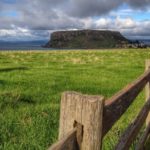
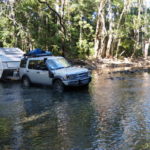
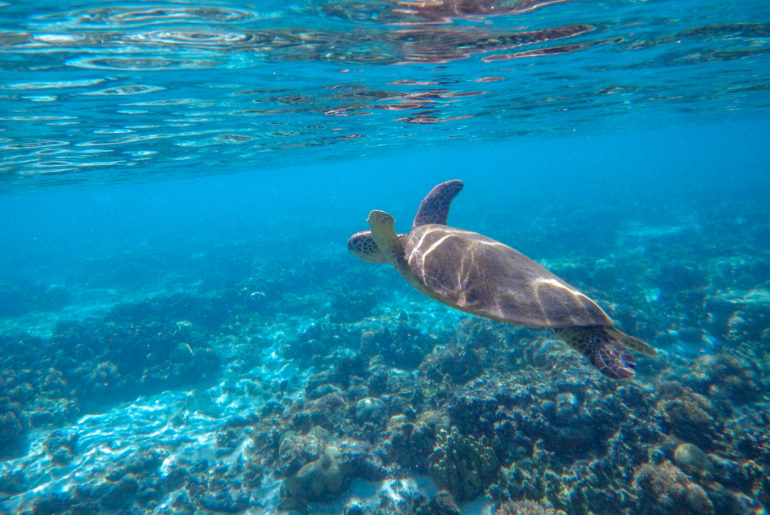
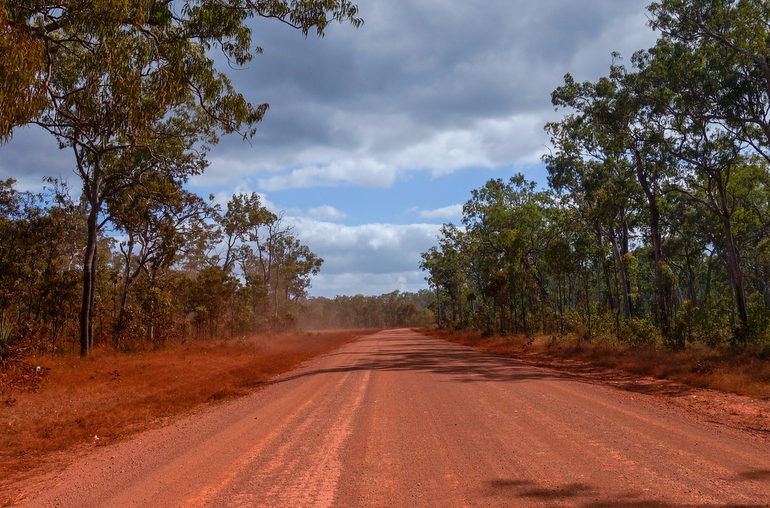

1 Comment
Dear Megan. Came across your blog through my friend Sarah Medwin. Love reading your travel blog and Queensland will be next. We have just come back from a trip from Perth pt Hedland Karijini NP western desert and back south to tassie. And loved it all in our 2wheel Vw. Transporter. On rough gravel road. So I will look forward to reading the posts Have a fabulous trip